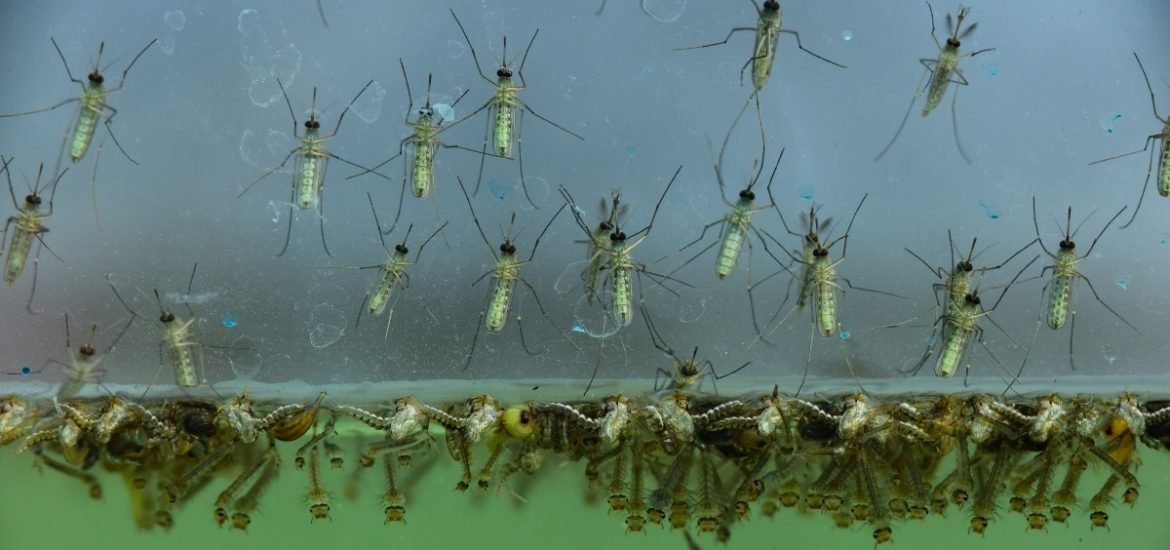
A new study published on 19 September in Biology Letters, a peer-reviewed scientific journal, has shown that microplastics eaten by mosquito larvae remain in their bodies well into adulthood, and may be spreading plastic particles to non-aquatic predators such as birds bats, and dragonflies, thus polluting yet another ecosystem. The authors suggest that “any organism that feeds on terrestrial life phases of freshwater insects could be impacted by MPs [microplastics] found in aquatic ecosystems.”
Microplastics are small particles of broken down plastic that are formed after prolonged environmental exposure and found in oceans, freshwater, and soil. They present a major global environmental concern and are known to be a source of greenhouse gas emissions, thus contributing to climate change. Moreover, the concept of plastics entering the food chain is not new, widespread distribution in oceans means fish and shellfish consumed by humans are contaminated with various plastics thus transferring microplastics between trophic levels (2). These minuscule plastic particles are toxic to many underwater animals. However, the newly discovered route of contamination may now threaten land-dwelling species as well.
Whereas previous studies showed plastic ingested by aquatic organisms can be transferred into the food chain in freshwater and marine environments, this is the first to demonstrate the transmission of microplastics by means of ontogenic transference, that is, between different stages of the life cycle that occur in different habitats. Many insects including mayflies, midges, and mosquitoes spend their juvenile stages in water and adult stages on land, and most are eaten by terrestrial vertebrates thus providing another path for microplastics to enter the land environment.
The study, led by Amanda Callaghan, an associate professor of zoology at the University of Reading in England and her colleagues, was performed by placing small fluorescent yellow and green plastic beads into water-filled beakers of hungry mosquito larvae. When the larvae grew up, the glowing beads could be observed inside their Malpighian tubules―a structure equivalent to a kidney―thus confirming the micro-sized plastic particles remain inside the insect body as it develops into the adult stage of life, although the number of particles decreased with each stage of development. The researchers also found that smaller beads were even more likely to linger and end up in adult mosquitoes. Although, there was no indication that microplastics harm the survival of mosquitoes.
The main concern raised by this work is that mosquitoes larvae are taking microplastics from an aquatic environment and transferring them to land-based animals that prey on insects, thereby sending more plastic into the food chain. The buildup of microplastics inside the gut of larger animals could potentially affect growth and reproduction, however, it still unclear whether microplastics can readily escape the gut to reach other organs.
Finally, the transfer of microplastics to humans or other animals through mosquito bites is highly unlikely. But as Callahan points out, “I think the human angle here is about the effect of humans—it’s about the effect the humans are having on ecosystems.”
(1) Al-Jaibachi, R., Cuthbert, R. N., and Callaghan, A. Up and away: ontogenic transference as a pathway for aerial dispersal of microplastics. DOI: 10.1098/rsbl.2018.0479
(2) von Moos, N., Burkhardt-Holm P., and Köhler A. Uptake and effects of microplastics on cells and tissue of the blue mussel Mytilus edulis L. after an experimental exposure. Environmental Science & Technology (2012). DOI: 10.1021/es302332w